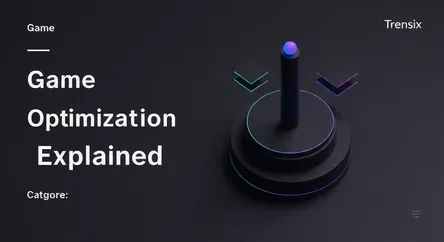Game
Game Optimization Explained

Discover what game optimization is and why it's crucial for ensuring your favorite games run smoothly on any device, from PC to console.
What is it?
Game optimization is the process of fine-tuning a video game's code and assets to make it run as efficiently as possible on a wide range of hardware. The goal is to achieve the highest possible frame rate and visual quality while minimizing the use of system resources like the CPU, GPU, and RAM. This involves everything from compressing textures and simplifying 3D models to refining game logic and implementing scalable graphics settings. It’s a crucial balancing act between performance and visual fidelity, ensuring a smooth and responsive experience for the player.
Why is it trending?
Optimization is constantly trending because the hardware landscape is more diverse than ever. Developers aim to release their games on high-end PCs, current and last-gen consoles, and even mobile devices. As games grow more graphically intense with features like ray tracing and vast open worlds, the challenge of making them run well everywhere increases. The rise of handheld gaming PCs and cloud gaming also puts a spotlight on efficient performance, making optimization a key factor in a game's commercial success and accessibility.
How does it affect people?
For players, good optimization directly translates to a better gaming experience. It means smooth gameplay without stuttering, lag, or crashes, which allows for deeper immersion and enjoyment. Poor optimization can make a game frustrating or even unplayable, leading to negative reviews and refunds. For developers, effective optimization is vital for reaching a broader audience, satisfying player expectations, and building a positive reputation. It is a fundamental aspect of quality assurance that can make or break a game's launch.